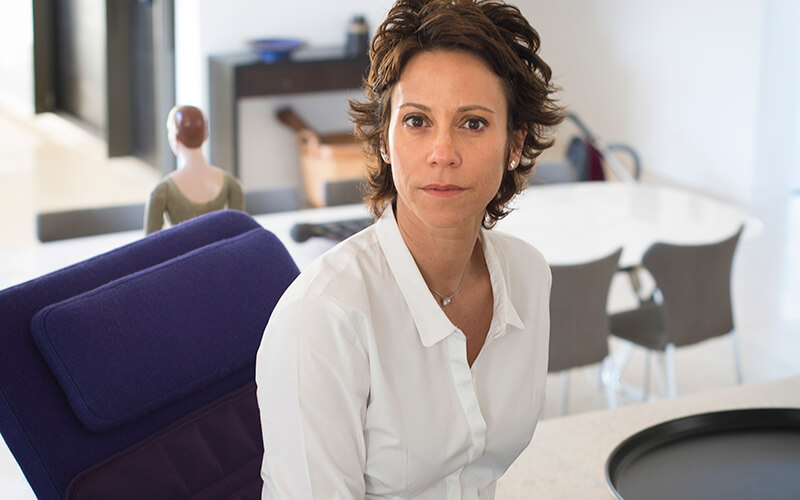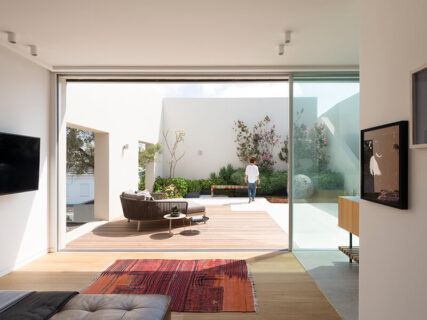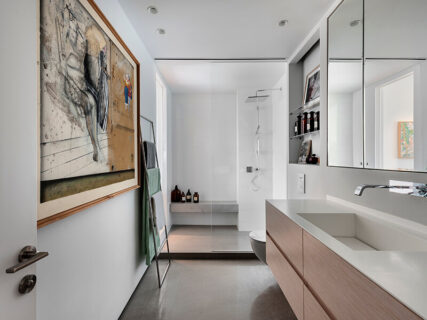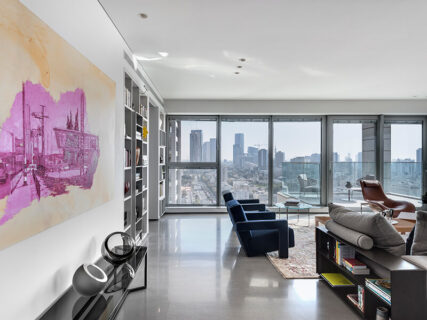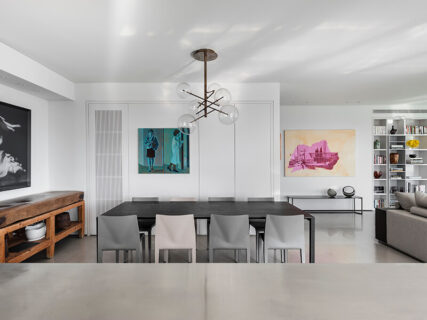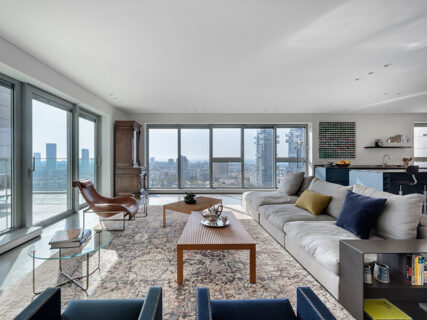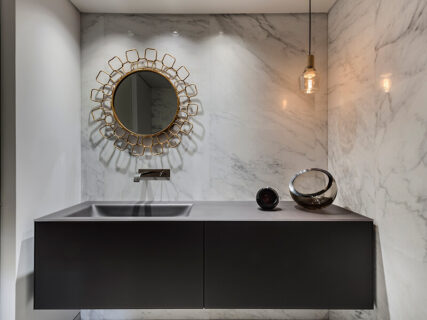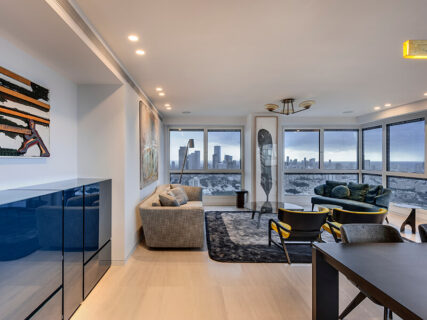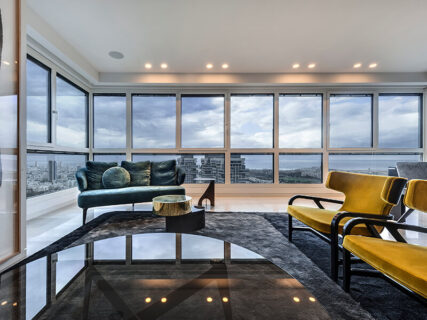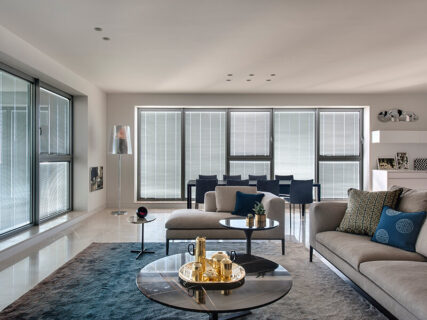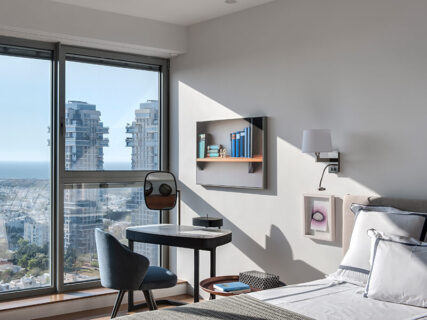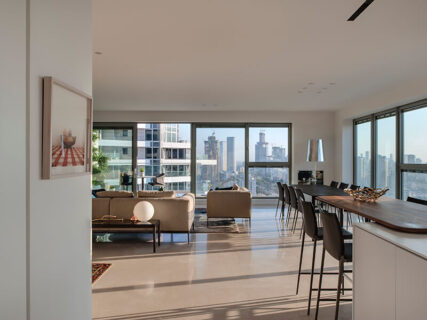Interview with Michal Keinan Sinai | Interior architect and designer
Interior architect and designer, Michal Keinan Sinai began her career at Shenkar college, (B.A textile design in 1992), and Berchem Academie – Beeldende Kunsten in Antwerp Interior Architecture. Her unique style combined with the characteristic touch of each project prompted us to ask more about the path that led her to devote herself to home furnishing and interior design all over the world.
Tell us about your job. Have you always wanted to dedicate yourself to interior design?
Not at all. I was born in Israel and started out as a textile designer there. I than moved to Thailand to manage a design team in a fashion company exporting to Europe. From there my path led me to Belgium, where I stayed 17 years. During those years my passion for textures colours and forms broadened in a way that today seems natural to me.
How was this passion born and what prompted you to carry it on up to today’s results?
I think I was born with a sense of “What’s right”. (some people like my daughters might say its OCD J..). My work as a textile designer involved a lot of traveling to the US, Japan, Hong Kong, etc. and living in Europe and the Far East; I got a chance to experience and get acquainted with international styles and traditions. I believe that this widening of the horizon is reflected in my work. I like to mix objects and colours, and styles. A bit like in the art world where the word “Juxtaposition” is very common. I aim to intrigue the visitors that enter the homes I make, make them ask why this object is placed where it’s placed. Where does it come from? What is it?…
Do you remember experiences, travels or moments in your life that particularly formed you in this sector?
Some 20 years ago I flirted with the idea of running an art gallery. Art has always been another passion of mine. For a while I was very busy with it. I love seeing what good art can do to a space. I’m not talking of matching it to a coach. I’m talking about something bigger, profound. How integrating art pieces into the home gives meaning to a space and the people who own it.
I remember my first visit to the Venice biennale. Standing in the Aesenale and admiring the curation in the most amazing setting. I also stood in awe discovering Carlo Scarpa’s Sculpture Garden in the Italian Pavilion. So much has been said about it but for me standing there for the first time it was nothing less than a revolution. It demonstrated in a perfect way how good architecture is curved and sculptured to allow the exterior enter the interior and form an intimacy while doing it.
How do you give life to a project? What elements are essential for you and what can be left to chance?
I start by looking at the surroundings. What advantages can I accentuate? (A beautiful tree out the window, a specific shape of the house?). Sometimes it’s the the clients themselves or a passion of theirs that triggers the whole process. Natural light is essential. It’s a constant game changer. I will always look for an interesting way to bring it in. I believe that when you work this way things fall into place naturally. They may look like they were left to chance, but as Freud would say… It’s the subconscious that’s doing the work.
Observing your works it is impossible not to notice the extreme balance of each environment merged with a measured research of materials and colours. What relationship exists for you among these different elements? How much space is left for functionality?
I see the environment as an integral part of the space. It should never be ignored. The environment gives meaning to the space and vice versa. I like to draw in elements of it for a feel of continuity. Many times the way to do it is by colours, materials, textures and forms. Functionality is key to my design. The design isn’t worth anything if one cannot use it with pleasure. The aesthetics have to serve the man living in it.
Many of the interiors you designed bear the signature of prestigious Made in Italy design brands. How much space do you reserve for these “luxury” elements and how do you relate to the style they propose?
Style and glamour became an inseparable part of the definition of Italian design. They seem to create an equal balance between classical elegance and modern creativity. Always surprising and innovating with a fresh approach and aesthetics. For me, what speaks the most when I choose to use it, is the fact that it is beautiful and luxurious but also light and nonchalant at the same time. Working in a country like Israel, with Mediterranean weather and temperament these things are essential.
Do you have any projects you feel particularly attached to or where do you think you have expressed yourself more than in others?
I love all my projects big or small. Each one brings new challenges of different sources. Of course it’s nice when you have projects with an unlimited budget, but sometimes the smaller projects bring an opportunity for creative solutions and new territories.
One last retrospective: how do you think your work has changed in recent years? What has been maintained and what has ceased to exist or has completely changed?
I believe that with time I have become more easy-going with the way I combine different elements in my work. Creating beautiful spaces for people to live in isn’t enough suddenly. There has to be a surplus that will bring out their personality and this means combining element that are not design per say. Integrating all that into the design is the real challenge for me today.
Are you working on any projects right now? Would you like to give us some suggestions?
I am currently working on renovating the interiors and gardens of a house built in the early 90’ by a famous Israeli architect, Ram Carmi, for a legendary Israeli carpenter. The house was full of out-dated pieces of carpentry of precious wood. I completely turned the interiors around to fit to the family residing in it now and to give it a fresh look but at the same time wanted to pay tribute to the carpenter and his work. We’ve gathered all the wood from the pieces that we no longer wanted and planted it in a sophisticated way in a library I planned and in other elements in the house, (as reminders of the former owner).
What about the future instead? Do you already have any news in store?
For the moment, with all that’s going on in the world, I’m happy in the place I’m at.
